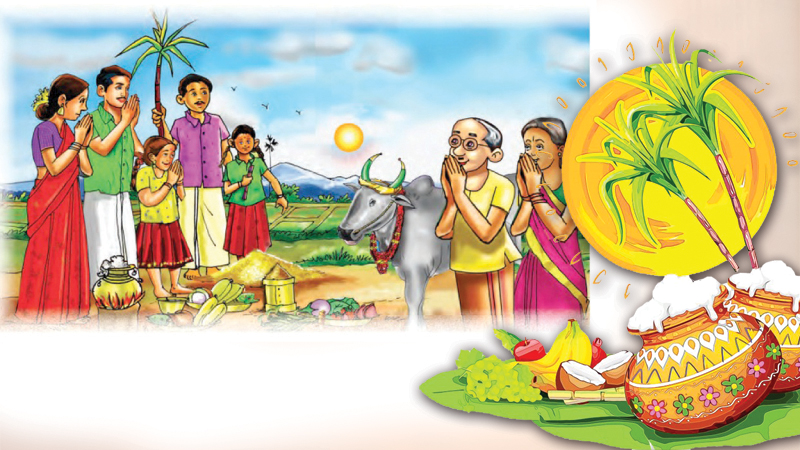Thai Pongal, a festival of thanksgiving
Image Source:Sundayobserver
Source:Sundayobserver
Pongal, also referred to as Thai Pongal is a multi-day Hindu harvest festival celebrated by the global Hindu community. It is observed in the month of Thai according to the Tamil solar calendar and usually falls between January 10-17.
Dedication to Surya
The Thai Pongal festival is dedicated to Surya, the Sun God and corresponds to the Makar Sankranti, the harvest festival celebrated under many regional names throughout India.
A three-day festival
The three days of the Pongal festival are called Bhogi Pongal, Surya Pongal and Mattu Pongal. Some Hindus celebrate a fourth day of Pongal known as Kanum Pongal.
The Sun’s journey Northwards
According to tradition, the festival marks the end of the winter solstice and the start of the sun’s six-month-long journey Northwards when the sun enters the Uttarayana.
Pongal
The festival is named after the ceremonial Pongal which means to boil and overflow and refers to the traditional dish prepared from the newly harvested rice boiled in milk with jaggery offered to Surya or the Sun God.
Mattu Pongal
Mattu Pongal is for the celebration of cattle. The cattle are bathed, their horns polished and painted in bright colours. Garlands of flowers are placed around their necks.
Kolam
Thai Pongal is traditionally an occasion for Kolam art. Offering prayers in the home and kovils getting together with family and friends and exchanging gifts to renew social bonds of solidarity are important features of this festival.
Important festival
Pongal is one of the most important festivals celebrated by Hindus in India, Sri Lanka and many other countries.
History
Some of the main features of Pongal are thanking the Sun God Surya, the forces of nature, animals and people who support agriculture. The history of the Pongal dish in a festive and religious context can be traced to at least the Chola period. It appears in numerous early texts and inscriptions with varied spellings. It appears as ponakam, tiruponakam, ponkal and other similar names.
Pongal dish
The festival’s most significant practice is the preparation of the traditional pongal dish. It is made from freshly harvested rice and is prepared by boiling it in milk and raw cane sugar (jaggery). Sometimes, additional ingredients such as cardamom, raisins and cashews are added. Other ingredients include coconut and ghee. Along with the sweet version of the Pongal dish, some prepare other versions such as salty and savoury ones in some states.
Women in some communities take their cooking pots to the town centre or the main square, or near a temple of their choice or simply in front of their own home and cook together as a social event. The cooking is done in the sunlight, usually on a porch or courtyard, as the dish is dedicated to the Sun God. Relatives and friends are invited.
The cooking is done in a clay pot that is often garlanded with leaves or flowers. Sometimes, with a piece of turmeric root is tied to the pot or it is decorated with an art called kolam.
It is the ritual dish along with many other courses prepared from seasonal food for all present. It is traditionally offered to the gods and goddesses first, followed sometimes by offerings to cows, then to friends and family gathered for the occasion.
Yashodhara Paranagama
11-F
Musaeus College
Colombo 7








